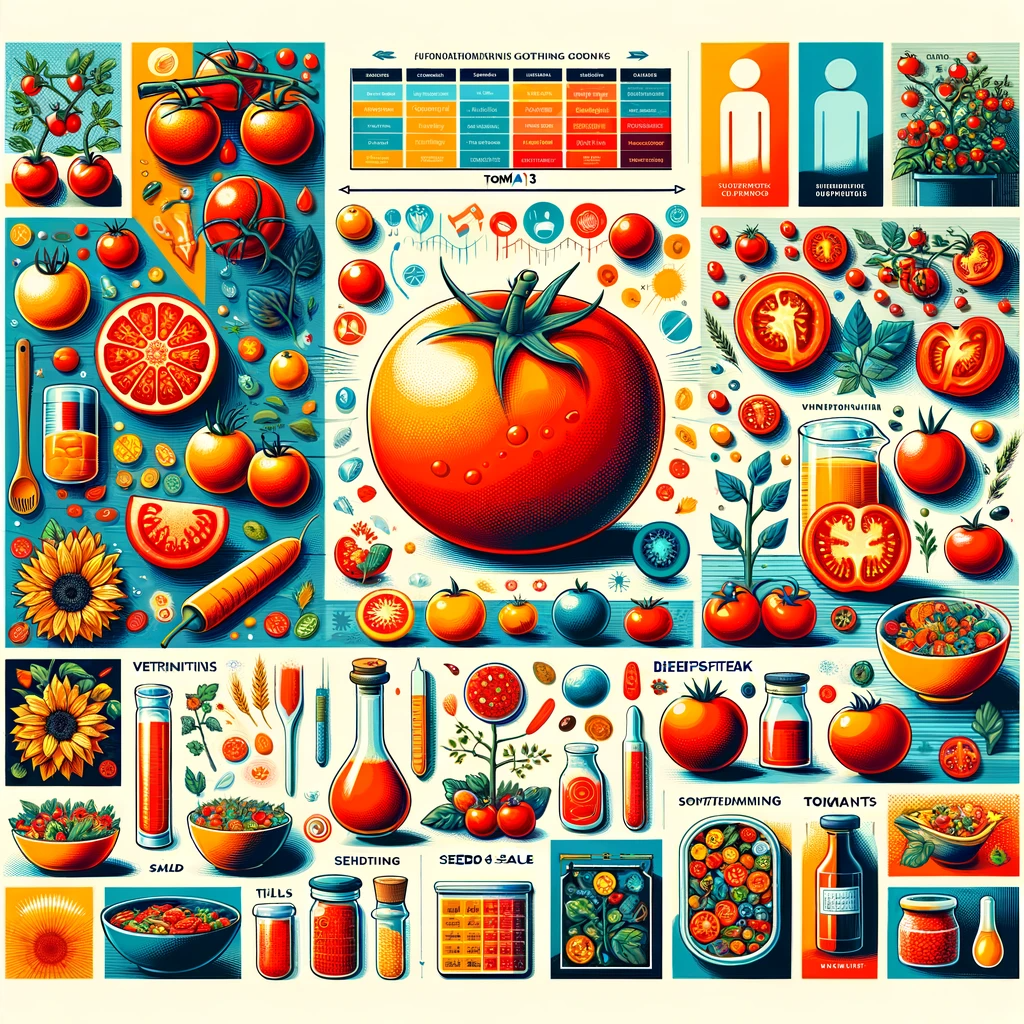Tomatoes have a rich history, and their evolution from heirloom to modern hybrid varieties is a fascinating journey through time. In this article, we’ll delve into the world of tomatoes, exploring the different stages of their development, the role of heirlooms, and the emergence of modern hybrids. By the end of this read, you’ll have a deep understanding of how these delicious fruits have transformed over the years.
The Origins of Tomatoes
Ancient Beginnings
Tomatoes have a long and storied history, with their origins traced back to the ancient civilizations of Mesoamerica. Native to present-day Mexico, tomatoes were cultivated by the Aztecs and Mayans over 2,000 years ago. These early varieties bore little resemblance to the tomatoes we know today, as they were small, yellow, and much closer in size to a cherry than a modern beefsteak tomato.
Introduction to Europe
It was not until the Spanish explorers, such as Christopher Columbus and Hernán Cortés, encountered tomatoes in the New World that they were introduced to Europe. Initially met with skepticism and even fear due to their association with the deadly nightshade family, tomatoes gradually gained acceptance in Mediterranean countries during the 16th century.
Heirloom Tomatoes: The Guardians of Tradition
What are Heirloom Tomatoes?
Heirloom tomatoes are non-hybrid, open-pollinated cultivars that have been passed down through generations. These tomatoes are valued for their unique flavors, colors, and shapes, as well as their historical significance. Heirlooms represent a link to the past, preserving the genetic diversity of older tomato varieties.
Characteristics of Heirloom Tomatoes
- Flavor Diversity: Heirloom tomatoes are known for their complex and rich flavors, ranging from sweet and tangy to smoky and earthy.
- Unique Appearance: These tomatoes come in various shapes, sizes, and colors, from the vibrant red of ‘Brandywine’ to the striped patterns of ‘Green Zebra.’
- Open-Pollination: Heirlooms reproduce naturally through open pollination, allowing gardeners to save seeds and continue the tradition.
The Emergence of Modern Hybrid Varieties
Hybridization in Tomatoes
With the advent of modern agriculture and the need for disease-resistant and high-yielding crops, hybrid tomatoes began to gain popularity in the mid-20th century. Hybridization involves crossbreeding different tomato varieties to create offspring with specific desirable traits.
Advantages of Modern Hybrids
- Disease Resistance: Modern hybrids are bred to resist common tomato diseases, ensuring a higher yield and reducing the need for chemical pesticides.
- Uniformity: Hybrids offer consistent size, shape, and color, making them ideal for commercial production and marketing.
- Extended Shelf Life: Some hybrids are designed to have a longer shelf life, reducing food waste.
Challenges of Hybridization
While modern hybrids offer many advantages, they also face criticism for potentially sacrificing flavor and genetic diversity in pursuit of uniformity and disease resistance. Traditionalists argue that heirloom tomatoes are superior in taste and texture.
The Future of Tomato Varieties
A Balancing Act
The debate between heirlooms and modern hybrids continues in the world of tomato cultivation. However, there is a growing trend towards creating hybrid varieties that prioritize both flavor and disease resistance. This balance between tradition and innovation ensures that we can enjoy delicious tomatoes while addressing the challenges of modern agriculture.
Biodiversity Preservation
Efforts are underway to conserve heirloom tomato varieties, ensuring that they remain a part of our agricultural heritage. Seed banks, gardening enthusiasts, and organizations are working tirelessly to safeguard these unique genetic resources.
Conclusion
The evolution of tomato varieties from heirlooms to modern hybrids is a testament to the adaptability and innovation of agriculture. While the debate over flavor and tradition persists, it’s essential to appreciate the role that both heirlooms and hybrids play in meeting the demands of today’s world. Whether you savor the rich flavors of heirlooms or prefer the convenience of modern hybrids, tomatoes continue to be a beloved staple in kitchens around the globe, connecting us to our culinary past and future.
The world of tomatoes is vast and diverse, and it’s up to each of us to explore and appreciate the wide array of varieties that this remarkable fruit has to offer.
